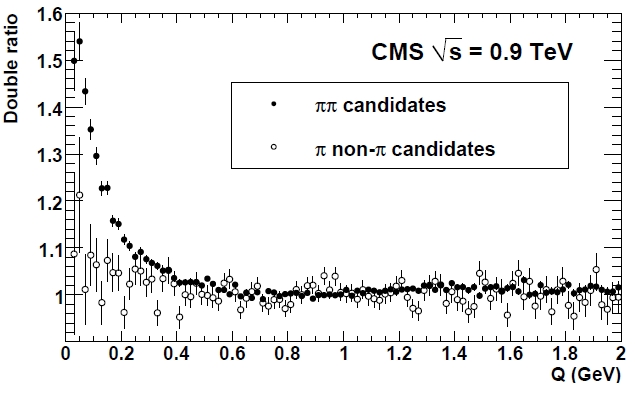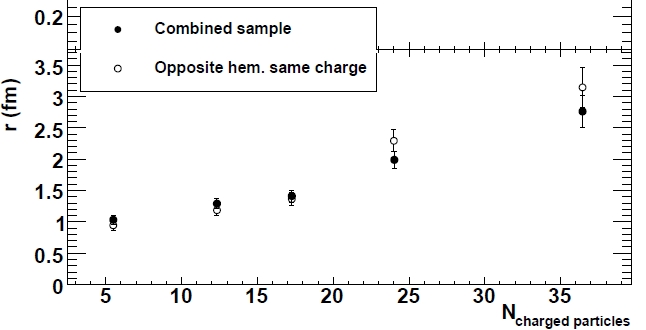Bose-Einstein correlations are a quantum-mechanical effect which enhances the probability that multiple bosons be found in the same state -same position, same momentum. We study them by searching for pairs of same-charge pions with very small relative momentum in our data, and measuring the emission radius within which their probability of having been created together is enhanced.

Above is a graph from the paper, which shows the effect: there is an enhancement in the black points at very small value of the quantity Q, which is the relative 4-momentum of the two pions. The enhancement is shown compared to a reference sample (white points) which should not -and does not- have any increase in the relevant Q region: these are pairs where at least one of the two particles is unlikely to be a pion, because of the amount of energy its track left in the silicon detector.
From the shape of the enhancement above 1 in the R(Q) quantity plotted above, one can extract the size of the region where the effect is produced. This is shown to increase with the particle multiplicity in the event in the figure below.

The two sets of points here just show two different ways to compute the value of r, by using two different "reference samples" of pairs of tracks not having the correlation. The size of the emission region is measured in multiples of one fermi -a millionth of a billionth of a meter.
The above result is in line with previous ones obtained in a host of other lower-energy experiments, but it is valuable information on Bose-Einstein correlations. For that reason, Physical Review Letters -a scientific magazine which usually accepts for publication only results with a significant new content- will be quite likely to accept it.





Comments